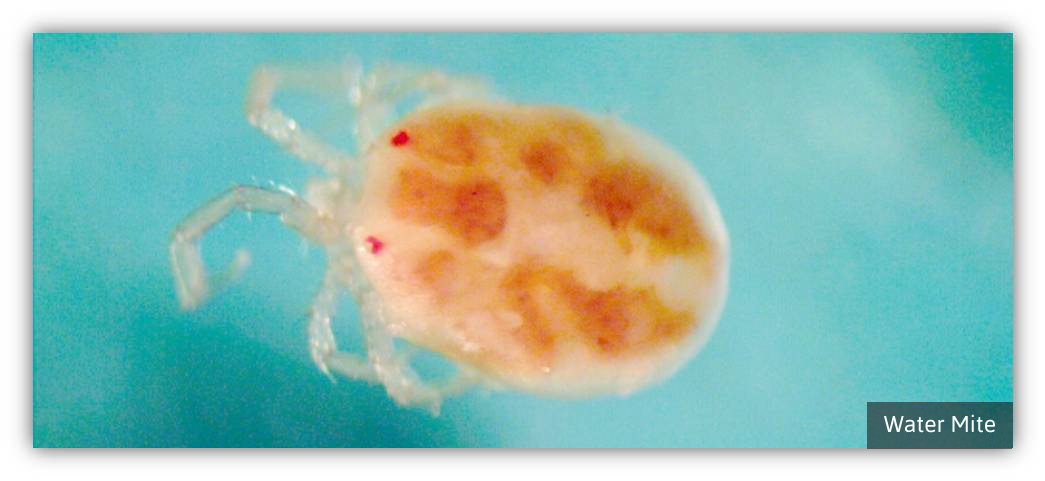
Fauna
The composition of animal species found in springs shows the character of a transitional habitat (ecotone) quite clearly. In addition to animals specialized in springs, species from the neighbouring habitats – foremost the ground water and the spring brooks – are present. From the ground water, organisms like cave amphipods, ostracods and copepods are either swept in or are actively migrating into the spring. The interconnection of these habitats is shown for example by the occurence of planarias which are inhabiting brooks and springs, but are also found in the ground water. A prime example is the Alpine Planaria, which is believed to colonize other springs via the ground water. There is a close connection beween spring and groundwater fauna. The migration of stream species into the spring area is demonstrated by the occurence of crustacean species like the stream amphipods of the genus Gammarus. This genus is an indicator for clean, oxygene-rich water and can be quite abundant in spring areas.
Among other animals found in springs, larvae of flies, mosquitos and other dipteres, caddy flies, stone flies and may flies have to be mentioned. They are using the spring as a nursery, until they grow up and develop the ability to fly. Springs with low currents may be inhabited by beetles of the families water and diving beetles. Animals living in the surrounding wetlands may also visit the spring areas to hunt or deposit their eggs. The fire salamander, various insects, spiders, millipedes, woodlice and snails are among these.
The small areas of spring habitats doesn't offer space enough to move around for animals of larger body size. Spring animals are therefore usually small and inconspicious, often not even visible to the unaided human eye. Depending on site characteristics, organisms are adapted to the current of flowing water. Another decisive factor for the population of a spring is the surrounding vegetation. Many organisms depend on the influx of organic material, like fallen leaves or dead wood. The biofilms, composed of bacteria and funghi, which are developing on these, are an essential grazing ground for these.


